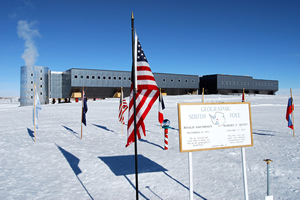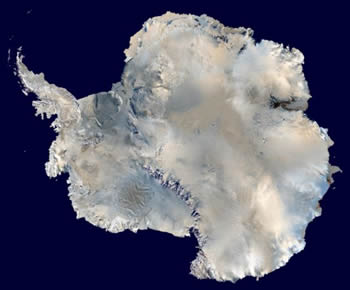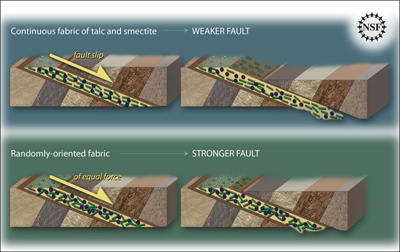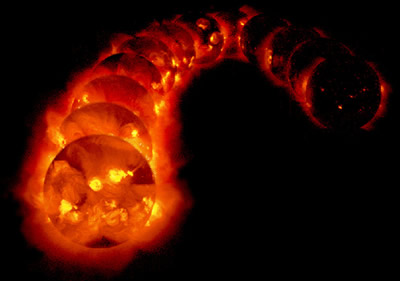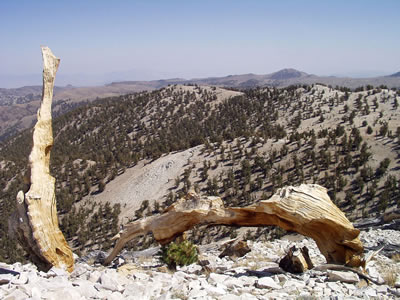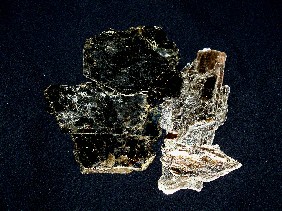Click on image for full size
Courtesy of Dwight Bohnet/NSF
The New South Pole Station
News story originally written on January 15, 2008
The United States has dedicated a new scientific station at the geographic South Pole. This is the third station the United States has operated at the South Pole since 1957, and the new station will allow for large-scale experiments in areas like astrophysics, environmental chemistry, and seismology. It is replacing a domed station next to the new building, which had served as the U.S. scientific outpost at the South Pole since the mid-1970's.
Arden L. Bement, the director of the National Science Foundation, spoke at the dedication. "Our purpose is to dedicate a facility that will help us push back the boundaries of the unknown--a quest that has continued year-round at this site for over 50 years," he said. "And to pay our respects to those who helped transform this mysterious and forbidding continent into a globally recognized place of wonder, transformation and knowledge."
The new station is called the Amundsen-Scott South Pole Station, named after Roald Amundsen and Robert Falcon Scott. These two explorers were the first humans to reach the South Pole. Amundsen arrived there first, on December 14, 1911. Scott reached the South Pole 35 days later on January 18, 1912.
The United States supports many different scientific research projects in Antarctica, including projects at the South Pole. In order to conduct research there all year long, they needed to build a new station that would keep people safe even during the winter. It took 12 years and 925 flights delivering cargo in order to build the station. This new station will allow scientists to continue to contribute to the scientific field campaigns of the 2007-2008 International Polar Year (IPY).


